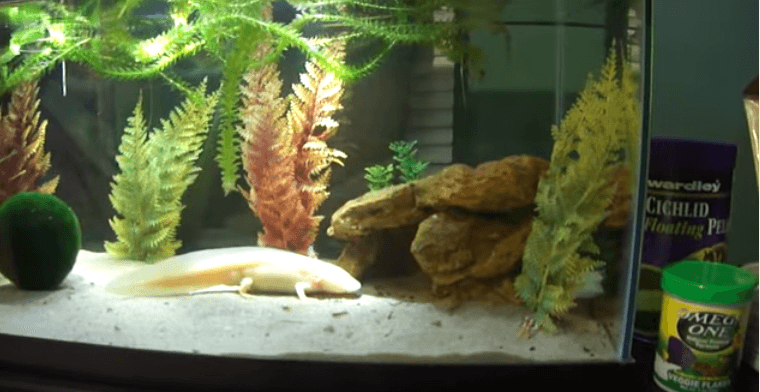 Axolotl is one of the most unique pets you can own. This aquatic salamander is native to Mexico and related to tiger salamanders, but in a tank environment. What makes it different from other salamanders is that, it remains in larva stage, which means they live in the water, making them an attractive and unique choice for an aquarium pet.
Axolotl is one of the most unique pets you can own. This aquatic salamander is native to Mexico and related to tiger salamanders, but in a tank environment. What makes it different from other salamanders is that, it remains in larva stage, which means they live in the water, making them an attractive and unique choice for an aquarium pet.
Taking care of axolotl is pretty easy. The best thing about them is they have a pretty long lifespan, as they can live 10 to 15 years, some even 20 years. However, this also means that having this pet in your house I a long term commitment. This entry will talk about how to take care of this tank pet.
Prepare their Ecological Housing
Axolotl lives in tanks, and for a full-grown axolotl, the size of its tank should be at least twice its size. This means you need at minimum of 30 inches long tank, 45 inches is the ideal. The tank should also be 15 inches deep and wide, with 21 gallons of water capacity. Anything smaller than 30 inches will make the animal feel uncomfortable, agitated, and stressed. Smaller tanks are good for infant axolotls, but once they are full-grown, you definitely need a bigger tank.
As with many salamanders, axolotls can leap high. Thus, you need to have a mesh on top or the fish tank should not be completely full. Also, axolotls are pretty sensitive with the lights, and they prefer the dark. Thus, the tank should include hiding places such as cave, crevice or tunnels.
Provide a Filter
Like other tank pets, axolotl tank should be kept clean. This means you need to put a filter in its tank. Keep the filter on low, or if your filter comes with a tube, make sure it aims at the glass or hide it behind something so your pets won’t hurt their gills when they get near it.
Keep a Consistent Water Temperature
The ideal temperature of the water is between 10° C and 24° C. Anywhere colder or hotter can be stressful for the animal, while going above 24° C may kill the axolotl.
Change the Water Weekly, If Possible
You don’t have to replace all the water in the tank, rather, simply change 1/4 of the water once a week. This will help keep the tank clean. Of course, you need to take your pets out of the tank first before replacing the water. You can get a second small tank where you can place them temporarily, or fill and place them in a large water container.
Get the Right Substrate
Sand is the best substrate for these animals; it’s safe and looks good in the tank. But make sure you choose the finer sand and rinse the sand thoroughly before putting it inside your tank.
Pebbles, especially smaller ones, can be problematic, as axolotls may swallow them accidentally, which could kill them.
Some opt for bare bottom tanks as they are easier to clean. But the glass can be slippery as axolotls don’t have something to grip on, making it harder for them to walk.
Feed them Once a Day
You only need to feed your axolotls once a day. They are carnivorous, which means they can eat anything meat, like worms  and mealworms, crickets, chicken liver, etc. You can also get their food from the pet store, such as bloodworms, small feeder fish, or brine shrimp.
and mealworms, crickets, chicken liver, etc. You can also get their food from the pet store, such as bloodworms, small feeder fish, or brine shrimp.
Also, keep these animals well fed, and NOT overfed. Overfeeding axolotls can be unhealthy and can make them obese. However, not feeding them enough, especially if you house a pair or more of them in one tank, can result to cannibalism, and may eat limbs of each other.
Keep the smaller ones in different tanks, as they may get eaten by adult axolotls.
Lastly, remove any leftover food immediately using a siphon or net

 Author and long-time animal lover. Sharing knowledge on pet care through experience and the written word.
Author and long-time animal lover. Sharing knowledge on pet care through experience and the written word.